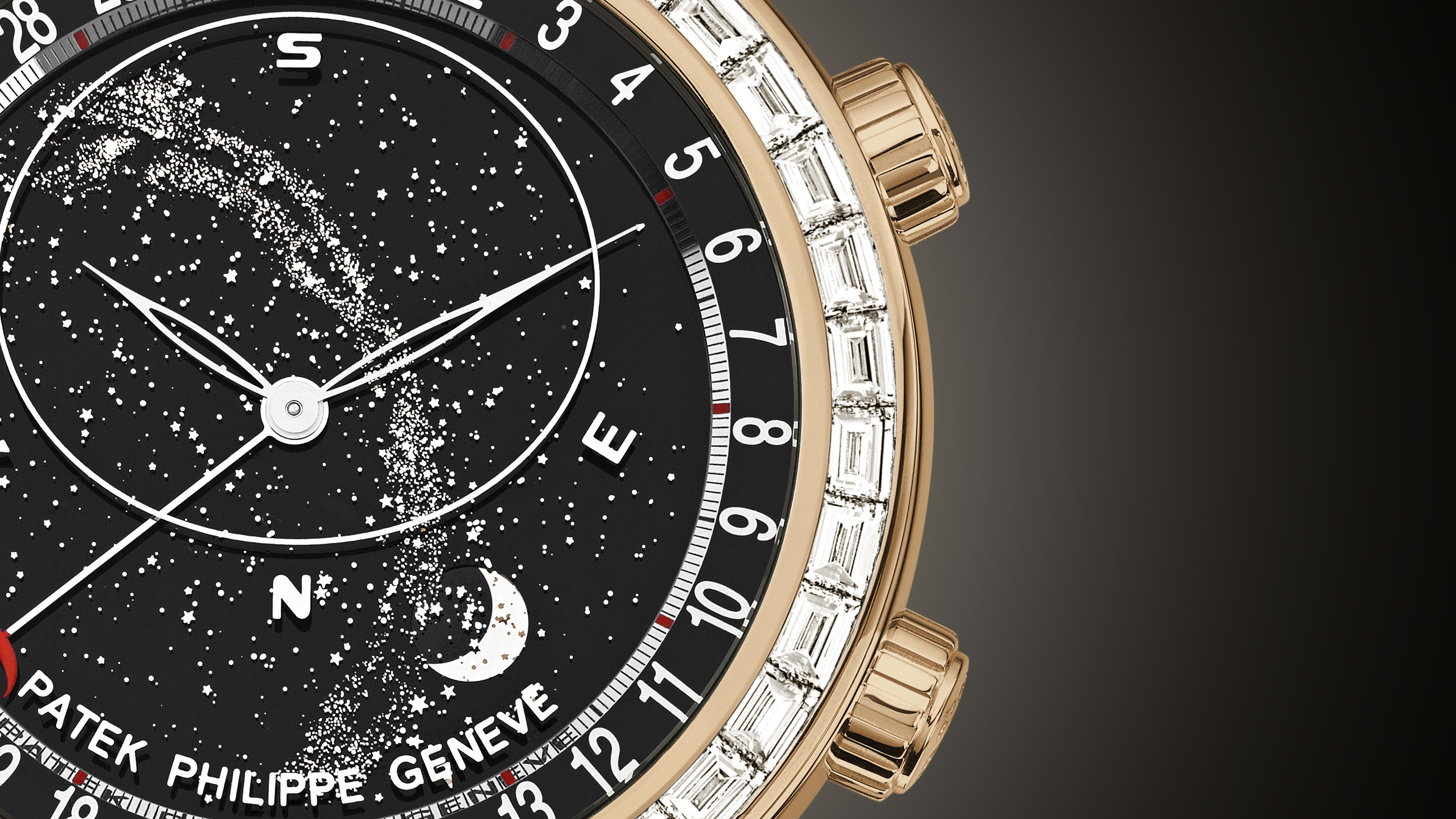Grand Complications
6104R-001
$506,424

CELESTIAL. JOAILLERIE.
$506,424
Rose gold. Diameter: 44 mm. Thickness: 11.33 mm. Water-resistant to 30m. Sapphire crystal case back.
Bezel: 38 baguette-cut diamonds (4.27 cts). Clasp: 22 baguette-cut diamonds (1.13 ct). Total of 60 baguette-cut diamonds (5.4 cts)
Alligator leather with square scales, hand-stitched, shiny black. Rose gold fold-over clasp set with diamonds.
240 LU CL C
Self-winding
Celestial
Date by hand
Hours and minutes of mean solar time
Sky chart
Ellipse representing the visible part of the sky for a given latitude
Meridian
Time of meridian passage of Sirius and of the Moon
Angular motion of the moon
Moon phases
Diameter: 38 mm. Thickness: 6.81 mm. Number of parts: 315. Number of jewels: 45. Power reserve: min. 38 hours – max. 48 hours. Winding rotor: 22K gold off-center minirotor. Gyromax®. Frequency: 21,600 semi-oscillations/hour (3 Hz). Balance spring: Spiromax®. Distinctive sign: Patek Philippe Seal.
Explore more